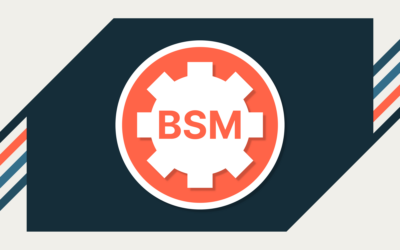Central to ensuring the financial stability and growth of an organization is the role of treasury management. Whether this role is played by a dedicated treasurer and treasury team or assumed by other resources in the finance team like the Controller, treasury management is pivotal. For those seeking information about what is treasury management at a bank we suggest further reading on the topic. For banks, treasury management is at the core of what they do as a business. Here we look at what is treasury management for a non-financial institution.
What is treasury management?
Treasury management involves overseeing a company’s daily cash flows and making strategic financial decisions. It ensures effective liquidity management, secures and maintains credit lines, optimizes investment returns, and formulates strategies for the efficient allocation of funds.
Many treasury management functions like cash management can be handled with a dedicated treasury management system. Some functions, however, are embedded into other systems, especially the risk management and FP&A functions.

Key functions of treasury management.
Cash and liquidity management.
Controlling the company’s cash flow is a central function in the treasury management process. Essentially, the treasury must ensure that it has enough funds to operate. This function is critical for ensuring the business has enough liquid assets to meet its short-term obligations and can efficiently allocate financial resources for its operations and strategic objectives. Key aspects of cash and liquidity management in the treasury function include
- Cash flow management: This involves forecasting, monitoring, and managing the company’s daily cash flows, both in and out of the organization. The goal is to ensure that the organization has sufficient cash to fund its operations and meet its financial obligations as they come due. Effective cash flow management helps avoid liquidity shortfalls and optimizes the use of excess cash.
- Liquidity planning and forecasting: Treasury must anticipate the company’s future cash needs and ensure adequate liquidity. This involves creating short-term and long-term liquidity forecasts, considering expected cash flows, investment needs, debt repayments, and other financial commitments.
- Working capital management: This refers to managing the company’s short-term assets and liabilities, such as inventory, accounts receivable, and accounts payable. Effective working capital management ensures that the company maintains a balance between liquidity and profitability.
Investment management.
When a company has excess cash, the treasury function is responsible for investing it to maximize returns while minimizing risk. This could involve short-term investments in money market instruments, certificates of deposit, or other low-risk financial instruments.
These investment returns can contribute to the company’s overall financial performance. While the treasury management function includes this, the expertise of a financial advisor from a reputable financial institution is typically relied on to make investment decisions.
Debt management.
Managing the company’s debt profile is a critical aspect of cash and liquidity management. This includes deciding on the mix of short-term and long-term debt, negotiating terms with lenders, and ensuring the company’s ability to service its debt.
Managing this debt’s interest rate risk and structure can help reduce costs. The treasury department will spend time ensuring they get the most favorable terms from lenders.
Foreign exchange and interest rate risk management.

Treasury is responsible for identifying and managing financial risks that could impact the company’s cash flow and liquidity. This includes currency risk, interest rate risk, and credit risk.
An important role is to manage the foreign exchange and interest rate risks created as the result of a company’s business practices. Currency fluctuations and interest rate changes can create volatility in a company’s earnings and make forecasting difficult. There are tools that those in the treasury management function can use to reduce and even eliminate these risks. This operation is referred to as hedging.
These financial instruments include forward contracts, options, and exchange-traded futures.
Interest rates have been volatile over the past five years. This volatility makes planning and forecasting difficult. High interest rates can raise the cost of doing business.

Relationship management with financial institutions.
Maintaining good relationships with banks and other financial institutions is crucial. These relationships can impact the company’s ability to access funding, negotiate favorable terms, and utilize various financial services.
Benefits of treasury management.
Overall, treasury management optimizes a company’s financial resources and minimizes financial risks. This role is fundamental to the financial health and stability of any organization.
Improved cash flow and liquidity position.
Improved cash flow and liquidity position equip companies with the financial resilience and agility needed to operate effectively, pursue strategic opportunities, and provide returns to shareholders, all while mitigating financial risks.
With strong cash flow and liquidity, a company is better positioned to meet its short-term liabilities and daily cashflow obligations as they come due. This reduces the risk of insolvency and enhances the company’s financial stability, which is crucial for long-term success.
Reduced financial risks and associated costs.
Minimizing financial risks, such as credit, market, and operational risks, can reduce costs and provide additional predictability to a business. This is essential for planning and decision-making.
Increased stakeholder confidence.
A strong cash position and liquidity are often indicators of a healthy business. This can increase confidence among investors, creditors, and other stakeholders, potentially leading to a higher stock price and better overall market perception.
Better strategic planning capabilities.
Treasury management systems (TMS) and financial modeling tools provide real-time and historical data on cash inflows and outflows. This comprehensive view of cash flow helps organizations accurately forecast future cash positions and make informed decisions about timing and size of investments and borrowings.

AP Automation Tour
Explore a modern AP Automation platform in our interactive Product tour.
Types of treasury management services.
Remote deposit capture.
Remote deposit capture (RDC) is a technology that allows businesses and individuals to deposit checks into their bank accounts without having to physically deliver the checks to the bank. This is typically done by scanning a digital image of the check using a mobile device or a check scanner and then transmitting that image to the bank for processing.
This can speed up the time it takes for funds to be available to the company for daily cash flow, save time and energy for treasury departments, and improve security.
Merchant services.
Merchant services refer to a range of financial services businesses use to accept and process electronic payment transactions. These services typically involve the use of technology for accepting payments via credit cards, debit cards, mobile payments, and electronic checks. Merchant services are provided by merchant acquirers, which are banks or financial institutions that process payments on behalf of merchants.
Treasury departments use them for various activities, including payment processing, cashflow management, fraud protection, reporting and reconciliation of payments, compliance, global transactions, and cost management.
Account reconciliation.
Account reconciliation is a critical process in the treasury function of any organization. It involves verifying that the balances in an organization’s accounting records (such as ledgers and bank statements) are consistent, accurate, and complete.
Payment acceptance technology.
Payment acceptance technology refers to the methods and systems businesses use to process and accept customer payments. This technology encompasses a wide range of tools and platforms that enable transactions through various payment methods, such as credit cards, debit cards, electronic checks, mobile payments, and online payment gateways.
The importance of payment acceptance technology in modern business operations is significant for several reasons, including improved cashflow management, better security, and enhanced data for analytics and decision-making.
Zero balance accounts (ZBA).
A ZBA is a type of checking account that is automatically maintained at a zero balance. Instead of holding funds, the account is used purely as a disbursement or collection vehicle.
Step 1: Transactions are made through the ZBA as if it were a regular checking account. However, at the end of each business day, the bank automatically transfers funds to or from the master account to bring the ZBA’s balance back to zero.
Step 2: If the ZBA has a positive balance (from incoming payments like customer receipts), the excess funds are swept into the master account.
Step 3: If the ZBA has a negative balance (from outgoing payments like payroll or supplier payments), the required funds are transferred from the master account to cover these expenses.
This type of account can help treasury departments:
- Improve Cash Management.
- Reduce Excess Balances.
- Simplify Account Reconciliation.
- Enhance Control Over Funds.
- Prevent fraud.
- Utilize resources more efficiently.
Integrated receivables.
Integrated receivables are a comprehensive approach to managing a company’s incoming payments or receivables. This approach typically involves leveraging technology to streamline and consolidate various forms of payment processing and receivables management into a single, unified system.
The goal of integrated receivables is to reduce the time and cost associated with collecting and processing payments, improve cashflow forecasting, and enhance customer satisfaction through streamlined and efficient payment processes.
Cash conversion, often referred to as the cash conversion cycle (CCC), is a metric that measures the time taken for a company to convert its investments in inventory and other resources into cash flows from sales.
FX risk management.
Foreign exchange risk is when a company has foreign currency-denominated transactions, which is called transaction exposure. They can also have translation exposure when they have foreign currency-denominated assets or liabilities that are translated in the accounting cycle to the parent’s books. Translation exposure is viewed as an accounting exposure and is often ignored when it comes to FX risk management.
Many businesses manage transaction exposure, especially when it relates to a large foreign currency-denominated payment that is being made or received at a known future date. Treasury departments use forwards, futures, or currency swaps. Typically, these instruments are made available by the treasury management services offered by banks.
Treasury consulting services for debt refinancing.
Treasury management often relies on consulting services for specialist projects like debt refinancing. This service can help optimize capital structure, reduce borrowing costs, and improve financial flexibility. Some of the things that treasury consulting services do for debt refinancing are:
- Debt assessment and analysis.
- Refinancing strategy development.
- Market research and benchmarking.
Strategies for modern treasury management.
Integrating technology and tools.
Modern treasury management depends on good systems to get full visibility and access to the data needed for risk management and optimization strategies.
Specific purpose-built treasury systems will integrate with the rest of the financial tech stack to ensure that all financial processes are included in treasury management. For example, a cash management system will pull information from an accounts payable system like Airbase for outgoings and accounts receivable systems to see incoming.
Developing a strategic treasury team.
Treasury management also depends on a team of experts in risk management, capital management, investment strategies, and treasury management services offered by banks and other consulting services to be effective. A strategic treasury team with these areas of expertise will interact with many other parts of the finance team to be effective. Systems and internal processes will support them to ensure that the strategic objectives of the organization are met.
Managing risks in a globalized economy.
In an increasingly global economy, where companies engage in international trade, investment, and hiring, treasury management is critical to managing the financial risks that are created. These mounting complexities lead to a need for specialized talent to manage risks, optimize returns, and ensure regulatory compliance.
Schedule a demo
Learn how Airbase can transform your entire purchasing process.
 Jira Integration – Streamline Your Workflows
Jira Integration – Streamline Your Workflows  Ironclad Integration – Simplify Legal Operations
Ironclad Integration – Simplify Legal Operations  Asana
Asana 




